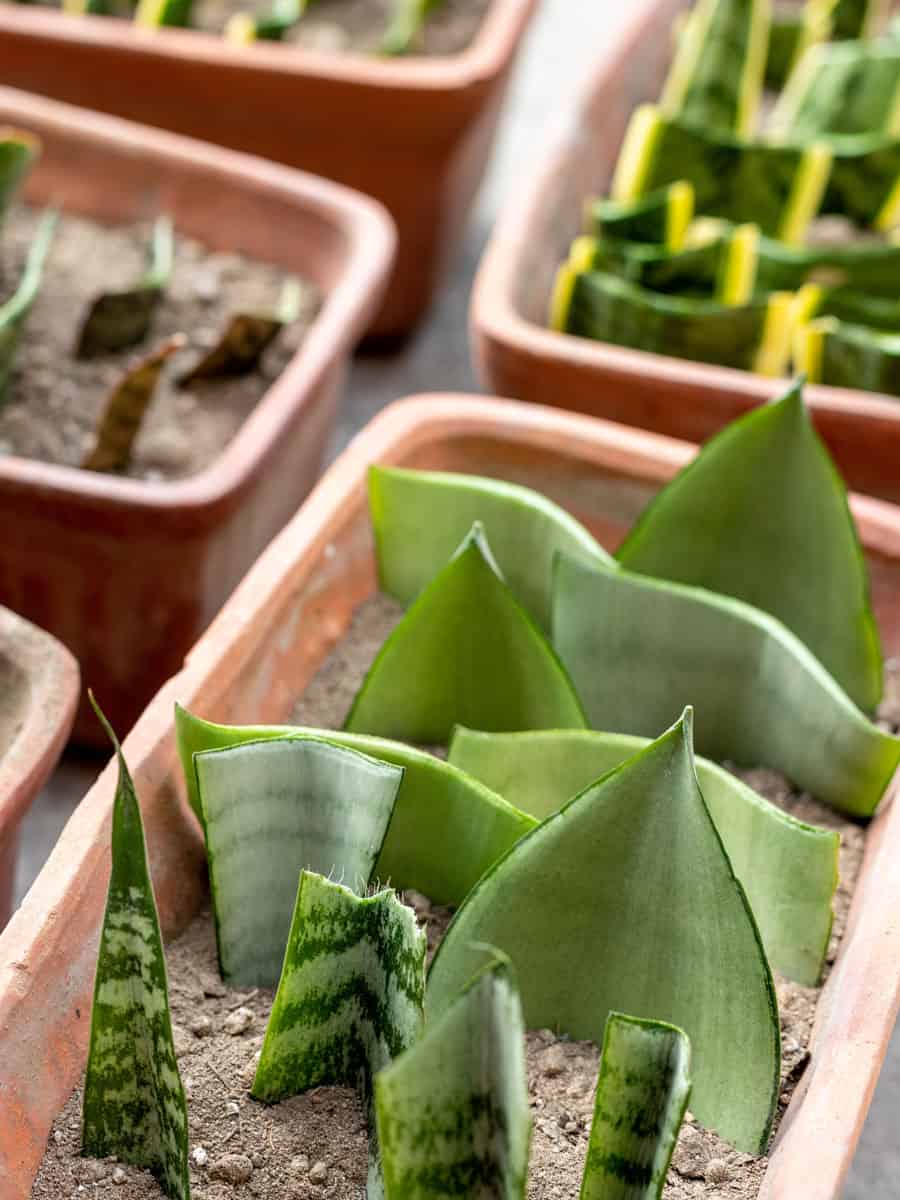If you've ever scrolled through our Facebook community, you'll know snake plants are a hot topic.
Known for their hardy nature and striking appearance, snake plants are a go-to for newbies and seasoned plant enthusiasts looking to add some leafy flair to their spaces.

The magic lies in their low maintenance and ease with which you can multiply them, expand your collection, or share them with friends.
This guide is a treasure trove of tips from the community's posts, comments, and shared successes on multiplying snake plants.
The methods are so straightforward you might end up with more plant babies than you know what to do with!
1. Provide Adequate Space
When propagating snake plants, allowing ample space for each new plant to flourish is crucial. Just like humans, plants benefit from having enough room to grow, which supports their development and overall health.
During the propagation process, particularly when plantlets (young plants) emerge around the base of the main plant, they should be carefully separated once they are a few inches tall and have developed their roots.
This separation during repotting helps to ensure that each new plant has enough room in its new pot to establish a healthy root system.
It's important to plant them snugly to encourage stability and growth and ensure they have adequate room to expand. This will promote healthier and more robust plants.
2. Water Sparingly
When multiplying your snake plants, less is more with watering. These hardy plants thrive when not fussed over, especially with moisture.
Here's your quick guide to keeping your snake plant's thirst quenched without overdoing it:
- Before you water, poke your finger about an inch into the soil. If it's dry, it's a thumbs-up for watering. If it's damp, wait a bit longer.
- When the soil is dry, give your plant a good drink, allowing water to drain from the bottom. This should be enough until the soil dries out again.
Snake plants need less water in the cooler months. Adjust your watering schedule as the seasons change.
Keep an eye on the leaves for clues about your plant's watering needs. Crisp, upright leaves? You're on the right track. Yellowing or mushy leaves might signal overwatering, so you'll need to dial it back.
Water sparingly; your snake plants will multiply before you know it!
3. Optimize Lighting
Snake plants thrive on light like a morning cup of coffee, fueling their growth and vitality. Originating from regions closer to the equator, they are fond of bright light.
Aim to provide bright, indirect sunlight for optimal growth, primarily through east or north-facing windows where they can bask in gentle morning rays.
If sunlight is too intense, sheer curtains can help diffuse it. In spaces lacking natural light, artificial grow lights serve as an excellent alternative, ensuring your snake plants receive the light they need to flourish.
Discover whether snake plants need grow lights and learn to avoid the "5 Unforgivable Snake Plant Care Mistakes You Might Be Making" to ensure your snake plants thrive with expert guidance.
4. Watch for Environmental Cues
When you're ready to multiply your snake plants, observing the environmental conditions they're thriving in is crucial. Here's how you can read the signs:
Season
Spring and summer are the prime seasons for propagation, mirroring snake plants' natural growth cycle. With longer days and increased sunlight, snake plants are more inclined to develop roots during this period.
Roots
Keep an eye on the roots of your snake plant. When roots start emerging from the bottom of the pot, it indicates the need for repotting and potentially propagating.
5. Take Advantage of Tropical Conditions
If you want your snake plants to thrive, simulating tropical conditions is a little trick you can't ignore. After all, these plants are native to warm, moist environments, so let's recreate that right at home!
First, temperature is critical — aim to keep your space between 65-80°F, which is the sweet spot for snake plants.
They can tolerate higher temperatures but are not fans of the cold, so keep them away from drafts and cold windows.
Now, let's talk humidity. These plants like it on the higher side.
You might want to get a humidifier or place a tray filled with pebbles and water underneath your plant pots. This simple DIY trick increases the moisture around your plants.
Creating tropical conditions doesn't require a greenhouse or any fancy gear. A bit of warmth, the proper humidity, and attentive watering will go a long way.
Find out how to create the ideal conditions for your foliage friend in our article, "Creating The Perfect Environment For Your Snake Plant: Temperature and Humidity Tips."
6. Maintain Proper Support
Multiplying your snake plants is like nurturing a mini ecosystem in your home. Super cool, right?
This will provide essential stability for your newly propagated plants as they begin their growth journey.
Ultimately, they are just starting in life! If your plant is taller or its divisions are still establishing their roots, consider adding a support stake to help them stay upright and secure.
In Closing
You've received many tips and tricks from fellow snake plant enthusiasts. With this collective wisdom, you're well-equipped to nurture your plant babies.
Now it's your turn to apply these insights and watch your snake plants thrive. Let's get those pups popping and continue sharing the joy and beauty of snake plants.
Thank you to all the snake plant parents in the community for your invaluable advice and experiences! Here's wishing you and your plants a flourishing future!
